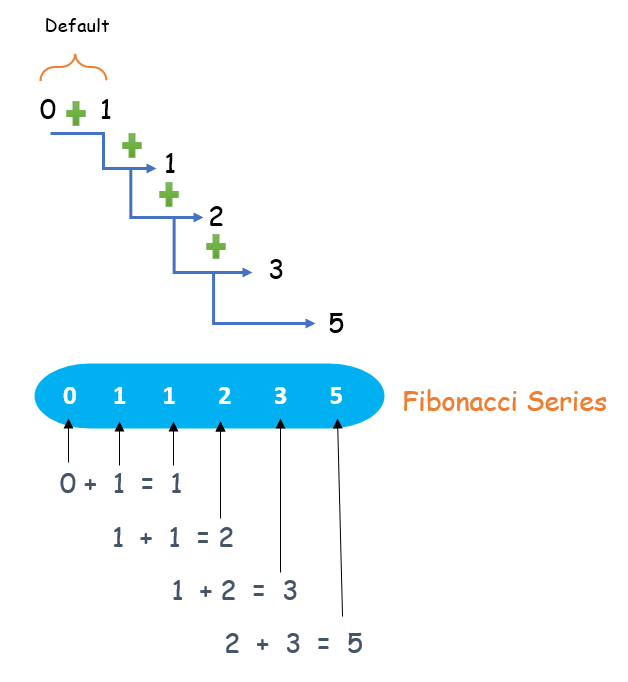


斐波那契数列是一个数字序列,从 0, 1, 1, 2, 3 等等开始。在斐波那契数列中,我们手动将前两个数字设为 0 和 1。斐波那契数列的其余部分通过计算前两个数字的和来获得,例如斐波那契数列的第三个数字将是 0+1=1,以此类推。
因此,通常我们可以定义斐波那契数列的第 n 项将使用 (n-1) 项和 (n-2) 项之和的公式计算。

在这个 R 程序中,在接受用户输入后,我们手动打印数字 0 和 1,然后在 while 循环中通过添加 (n-1) 和 (n-2) 项来找到第 n 项,并更新数字并将计数增加 1。
了解更多关于如何使用递归函数打印斐波那契数列。
步骤 1:向用户显示适当的消息
步骤 2:使用 readline() 将用户输入存入变量 total_terms
步骤 3:首先设置 num1=0,num2=1
步骤 4:检查变量 total_terms 是否有效,如果无效则重新输入值
步骤 5: 如果(total_terms >2),我们使用 while 循环来查找下一项
步骤 6: 在 while 循环中,我们首先打印两项 num1 和 num2
步骤 7: 通过添加最后两项并打印来计算下一项 nxt
步骤 8:将 num1 和 num2 的值更新为最后两项
步骤 9:继续直到项数达到 total_terms
# Take input from user
total_terms = as.integer(readline(prompt="How many terms? "))
num1 = 0 # first number
num2 = 1 # second number
count = 2
# check if the total_terms is valid
if (total_terms <= 0) {
print("Please enter a positive integer")
} else {
if (total_terms == 1) {
print("Fibonacci sequence:")
print(num1)
} else {
print("Fibonacci sequence:")
print(num1)
print(num2)
while (count < total_terms ) {
nxt = num1 + num2
print(nxt)
# update values
num1 = num2
num2 = nxt
count = count + 1
}
}
}
How many terms? 10 [1] "Fibonacci sequence:" [1] 0 [1] 1 [1] 1 [1] 2 [1] 3 [1] 5 [1] 8 [1] 13 [1] 21 [1] 34